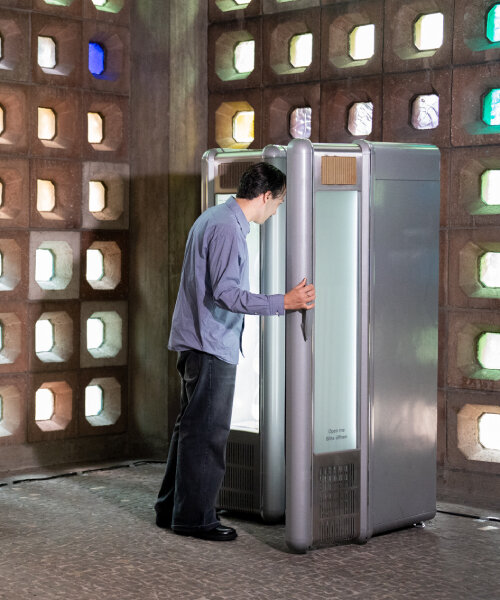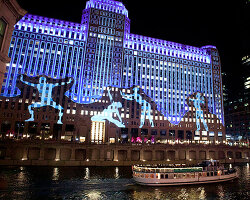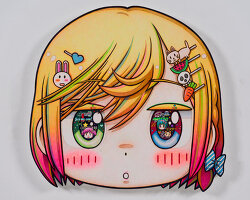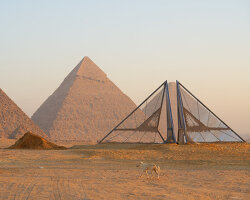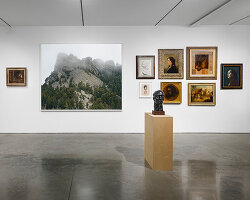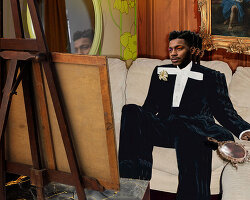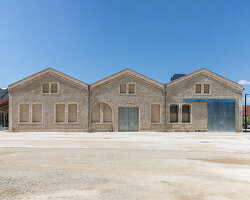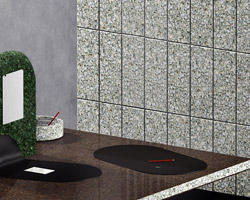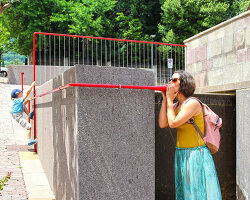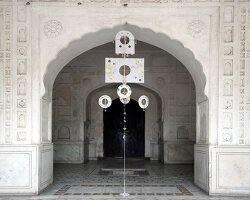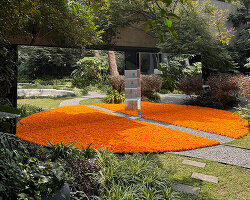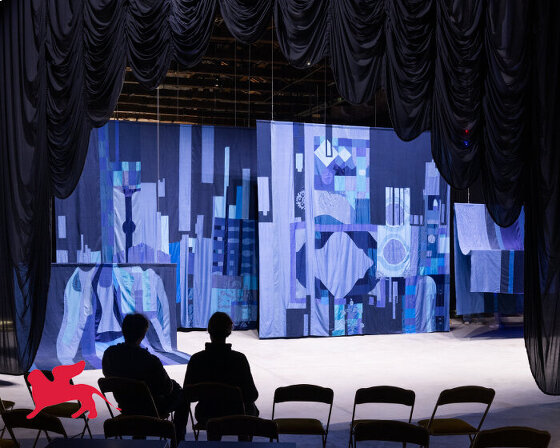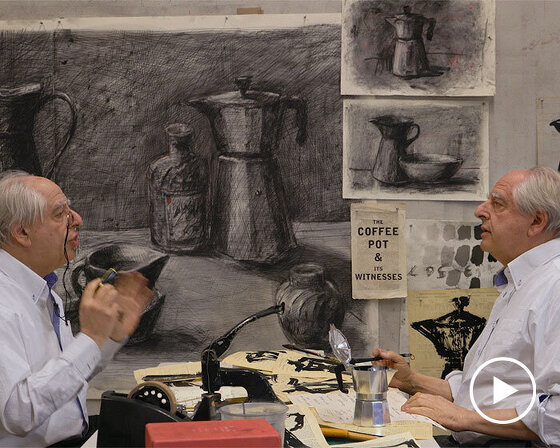bridging evolving ecosystems and communities at ornamenta
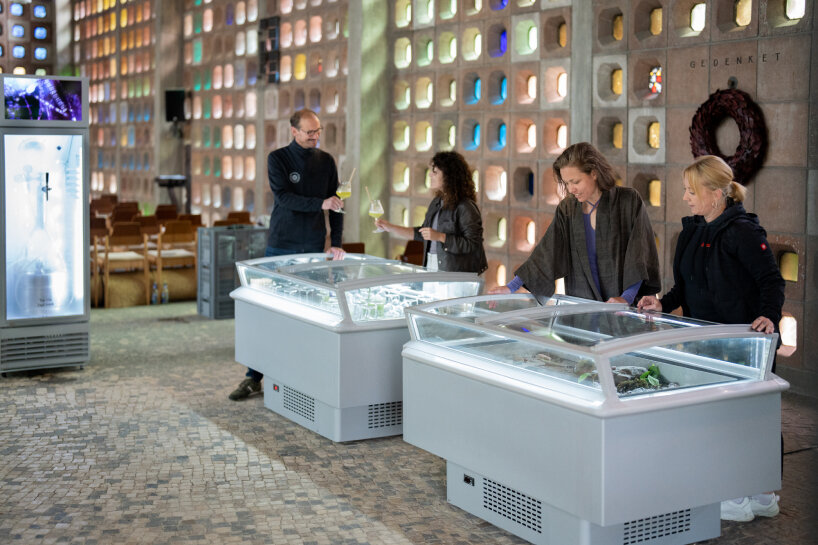
image © Karolina Sobel
knotweed: from invasive species to nutrient-rich beverage
At Ornamenta, which runs from 5th July until 29 Septemberth, Water Hadde Dudde Da comprises five fridge sculptures that together form an ‘honesty bar’, finding an apt home in a post-war modernist church restored by architect Egon Eiermann. Alongside a group of local and international designers, Atelier LUMA‘s Henriette Waal teamed up with local brewery Ketterer to create Knötti, a new refreshing alcohol-free drink made from local waters, German hops, and Japanese knotweed harvested in a nearby forest.
Addressing challenges within the beer and beverage industry in and around Pforzheim, which was once at the heart of the bioregion strongly intertwined with the pristine water streams, the research began with looking at the watershed. Here, knotweed grows in abundance, eroding the riverbanks and disturbing native vegetation, which Waal seeks to reposition from a harmful invasive species to a newly arrived resource. ‘By making what may seem like a straightforward product — a drink — but doing so by interpreting the changing ecology and making fresh social and cultural connections, a work like Knötti can be both a commercial prototype and a probe into new social and ecological relations,’ she shares. ‘And the cool thing is that in doing this you can help to balance the forest.’
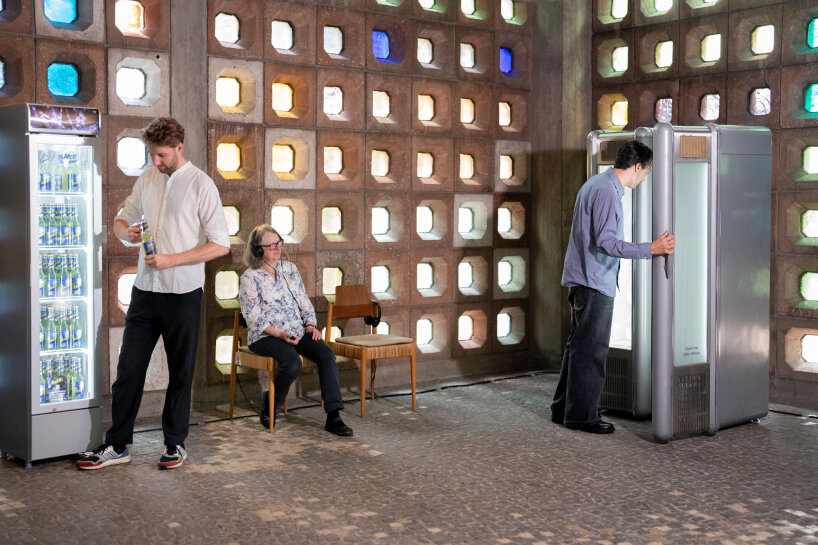
image © Karolina Sobel
interview with henriette waal of atelier luma:
designboom (DB): Can you introduce us to your work at Atelier LUMA?
Henriette Waal (HW): Atelier LUMA is based in Arles. Its bioregion features diverse landscapes, including meadows, wetlands, mountains, and sea. When Maria Finders, Jan Boelen, and myself, commissioned by Maja Hoffmann, were laying the foundations for the atelier eight years ago, it was very clear to us that we needed to research and understand how to design more in symphony with our surroundings. Growth in a bioregion means improvements to the land’s health and carrying capacity, alongside the increased resilience of its communities.
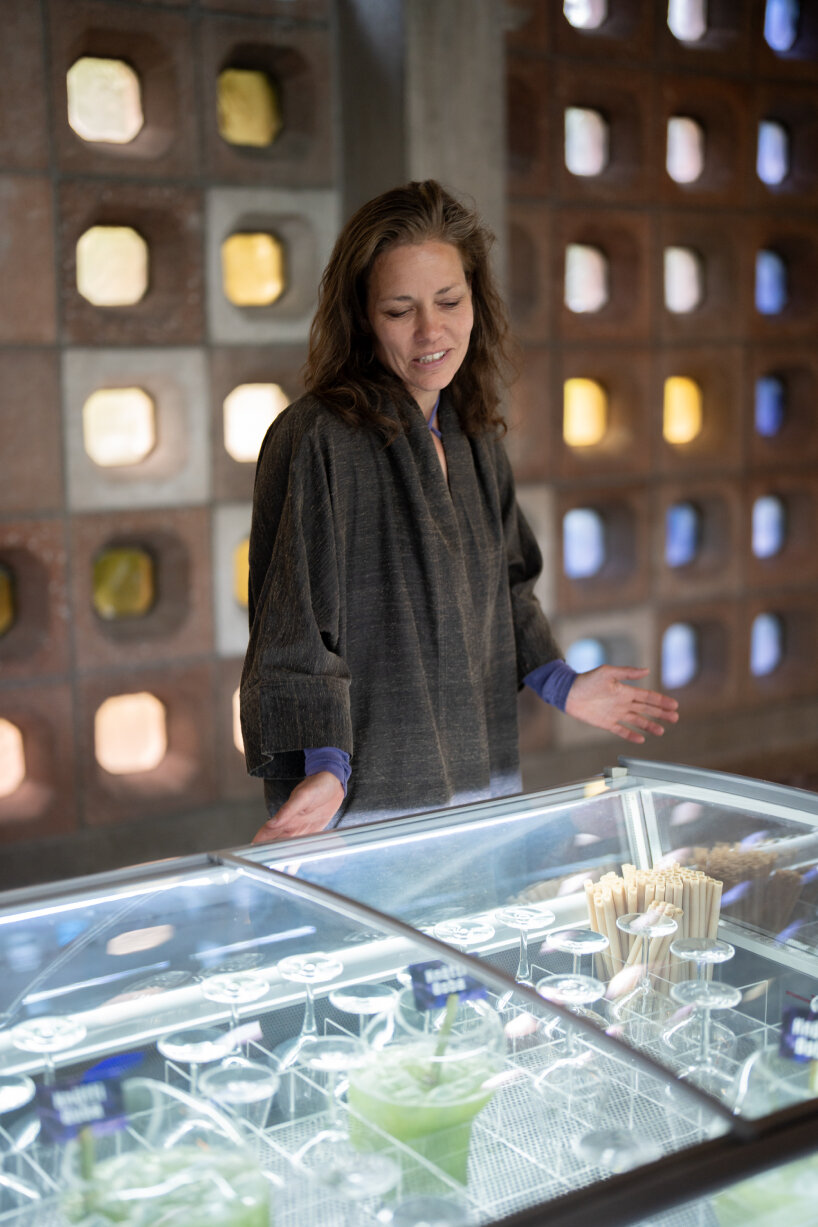
the project is directed by Henriette Waal of Atelier LUMA | image © Karolina Sobel
DB: How do you begin approaching this bioregional research?
HW: We had a great opportunity through LUMA Foundation to have the structural support for these kinds of research. It takes quite some time to really start to understand a bioregion. I approach design research with a holistic view, considering aesthetics, mechanisms, cultural significance, ecological relations, and economic activity to identify hidden connections. This leads to an understanding of requirements and emerging directions. Over the years I crafted collaborative structures which combined international design expertise, labs, and local farmers, for instance, which was key in supporting these innovations.
Also, in my work outside of LUMA I make new relations between people and landscapes. I’ve been working on topics such as agriculture, food, and water and waste streams — though I wouldn’t call it waste as in nature waste doesn’t exist — to examine different relations and material flows. And to approach design not as object or end product, but as a full cycle. Looking into what is specific for a region is also not only about material as a matter, but it’s a combination of material aspects and ways of doing.
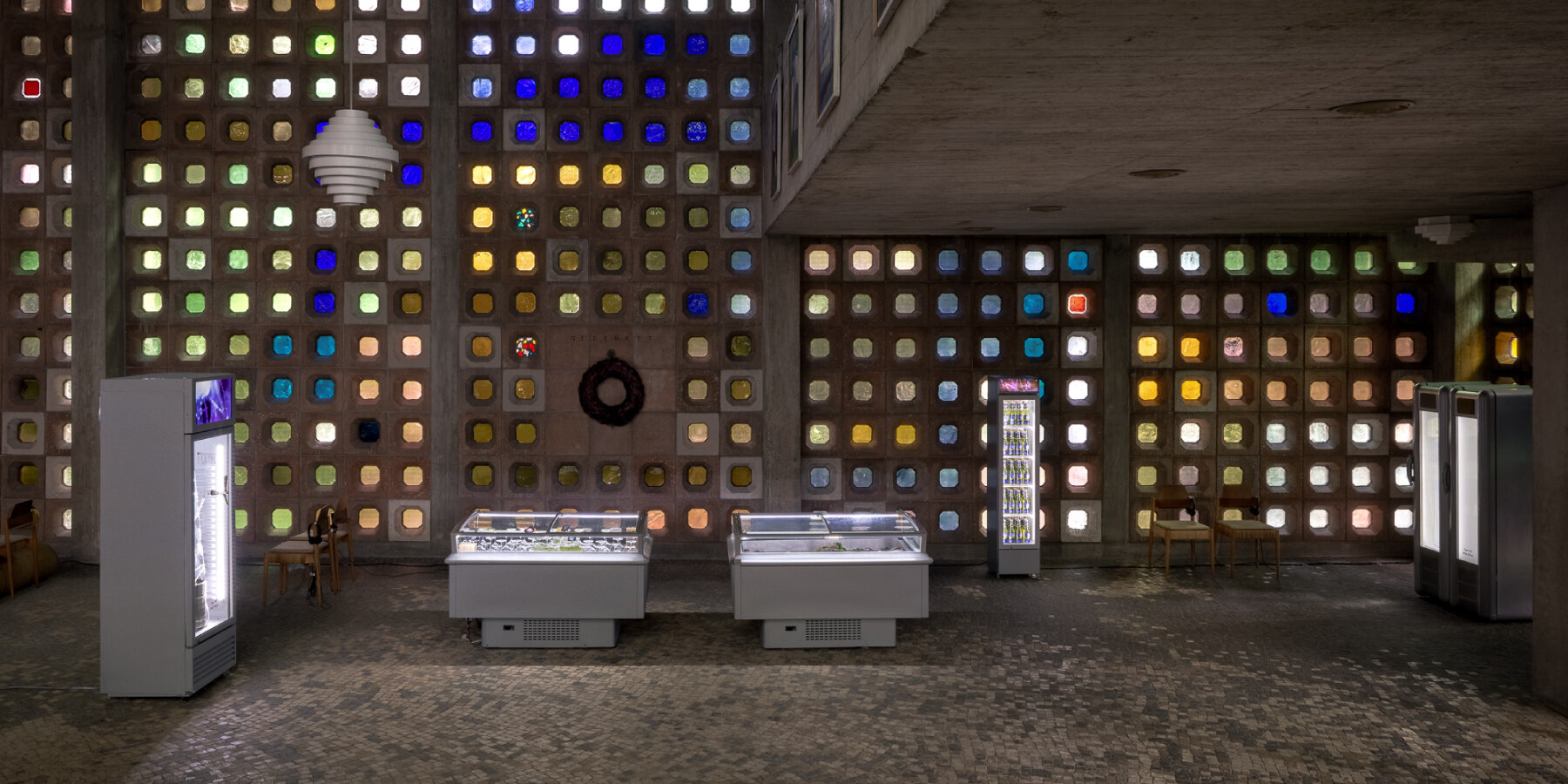
image © Sander van Wettum
DB: There are quite a few similarities then between the visions of both Ornamenta and Atelier LUMA. For your installation here, how did you begin looking at the natural landscape around Pforzheim and the Black Forest?
HW: Ornamenta and Atelier LUMA are both similar in the sense that they link international design expertise to a region, to its cultures, communities, and industries. Ornamenta paired me with local Pforzheim-based brewery, Ketterer. Historically, these breweries were attracted to the pristine water sources here, and Pforzheim also means river crossing. But due to human activity, building projects, and changing purification systems and such, water has been changing across all these different levels. This disconnected this brewery, which was once at the heart of the bioregion, from their own water source.
The watershed, which we looked at here in the Black Forest, often defines a bioregion and what grows there. Water is an interesting entity which also has a locality, a lot of invisible life and ingredients. And now with the pressure of pollutants, nano purification is increasingly implemented which actually kills its local quality and taste. Here at Ornamenta, we are talking about knotweed, an invasive species in the forest which grows on and erodes the riverbanks and it disturbs native vegetation — but I don’t like to call it ‘bad’ or invasive, I talk about newly arrived.
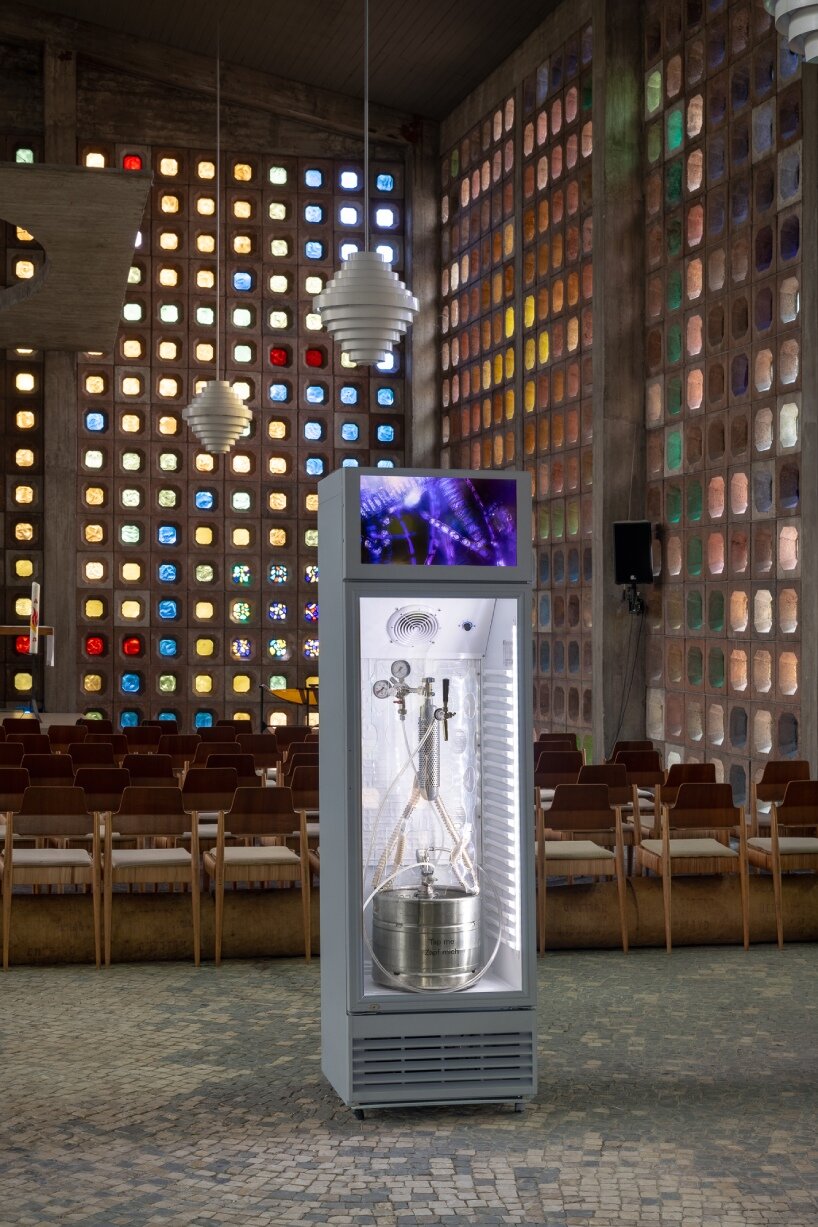
repositioning knotweed from a harmful invasive species to a newly arrived resource | image © Sander van Wettum
DB: One of the overarching curatorial themes of Ornamenta is to bridge the diverse cultural groups in the region through design and spotlighting its industrial heritage. How does this tie into Water Hadde Dudde Da?
HW: You have this beverage and beer industry here, and you have this beautiful enormous forest with so much knotweed. It’s interesting how industry and nature are always seen as separate, but actually, the beverage and beer industry are key fighters for the environment because their commerce is linked to the ground and water. Talking about scale, there’s a potential for production to take this seriously. Knotweed also tastes very good, and it has a lot of vitamins — it’s just a fantastic plant that is very good at growing. And the cool thing is that in doing this you can help to balance the forest.
This region also has one of the highest rates of migrant newcomers in Germany. Together, we thought, how can we connect this beer brewery and this new community of people that often don’t relate to alcohol? So we started crafting a very specific prototype, instead of a full bioregional mapping. Through this you start to immediately interact and understand how the culture works here and what are the challenges.
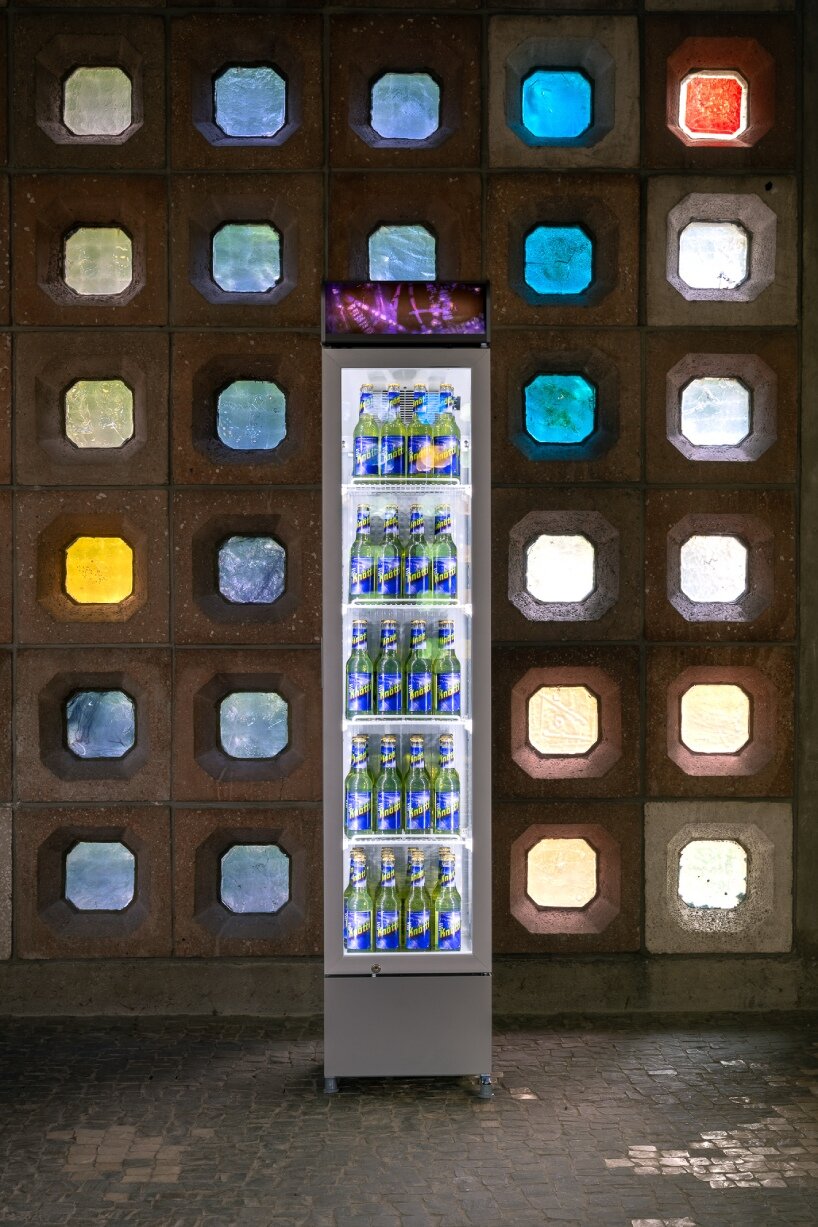
an alcohol-free drink made from local waters, German hops, and Japanese knotweed | image © Sander van Wettum
DB: What is the design concept of the installation?
HW: It’s an interactive ‘honesty bar’ concept which approaches all the senses, with different fridge stations. You have a station like a riverbed where you can hear the sound of the water, smell it, and see these very specific local stones with knotweed growing around them.
Then you have the station where you can take some boba pearls made from knotweed and algae, and a transparent tap station where you can pour your own drink. On the top, where you normally have the brand name, we have a microbial video of the living water. Then you have a station which is a water library, with five water samples organized from most pure to most lively. At the sound fridge you can see a full grown knotweed and hear the sound of it being squeezed in a juicer alongside all the industrial sounds from factories. And then there’s this fridge with Knötti drink bottles where you can take a drink and decide if you’d like to support the project with your payment.
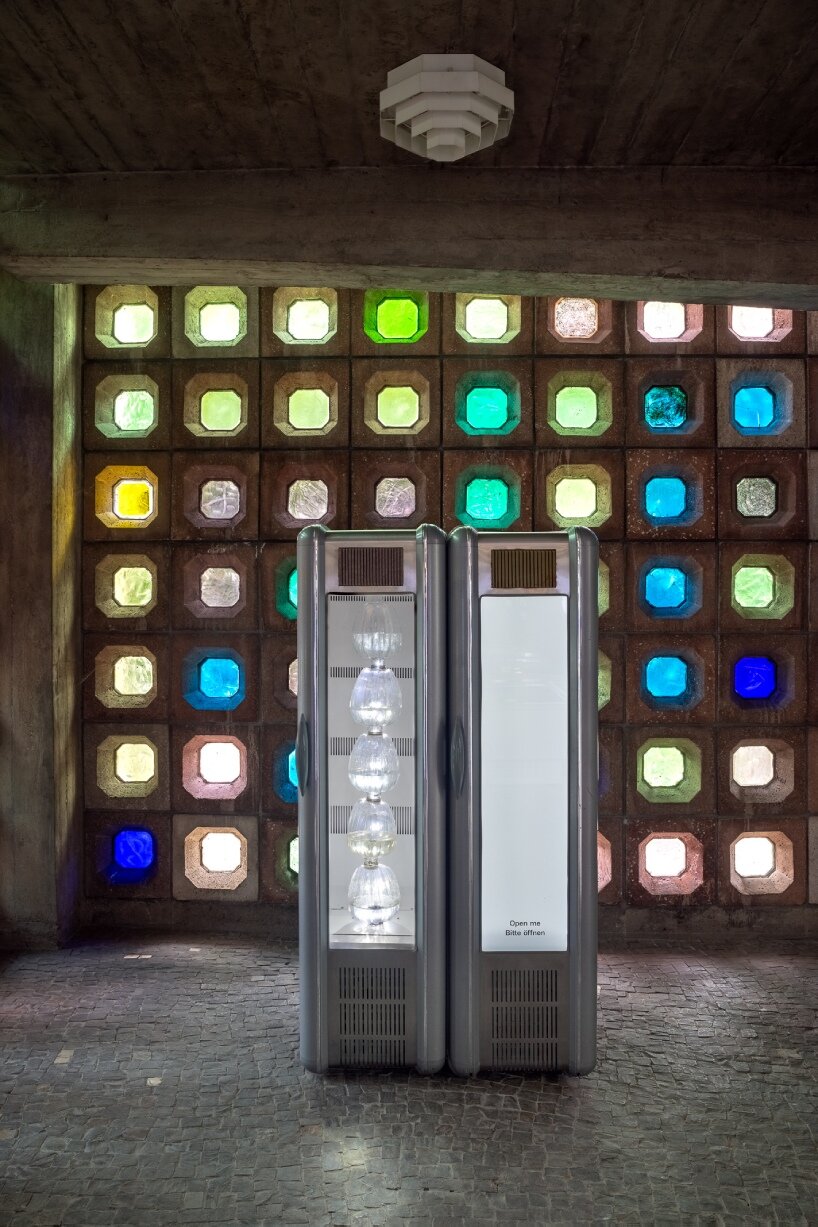
the installation comprises five different fridge stations | image © Sander van Wettum
DB: So you adopt a very interactive, human- and environment-first approach to art, industry, and production.
HW: Yes, and coming back to LUMA, they make stunning high-end art exhibitions but most artworks arrive ready-made and simply installed. Atelier LUMA really brought experimental design production to that heritage city and opened it up at the campus where you could visit the lab, touch and smell the production, and feel connected to the work. And I think that seeing with your hands, and here through taste, is very important. And so is to share not only the end product, but, like we did in this exhibition, to bring this deeper connection to objects and to the environment.
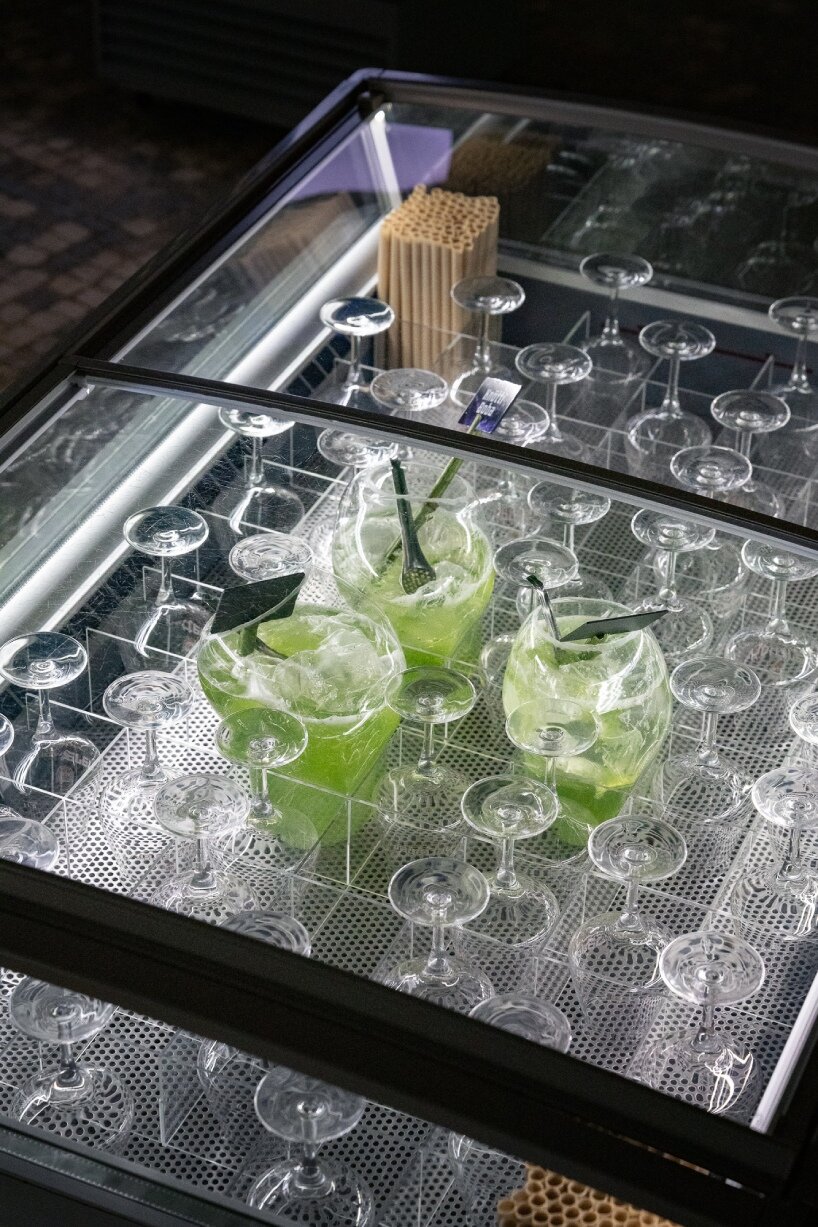
the drink comes with boba pearls made from knotweed and algae | image © Sander van Wettum
DB: Ornamenta really embodies this idea then, by dotting artworks in expected and unexpected places around the region and the Black Forest. Your location is also quite special here in this very architecturally significant church.
HW: It is. To exhibit this project which talks about change in the cultural and ecological landscape in this colorful church by Egon Eiermann, involving the church community, was really cool because it’s at the heart of communal life. And I think change starts from opening up to what is around you.
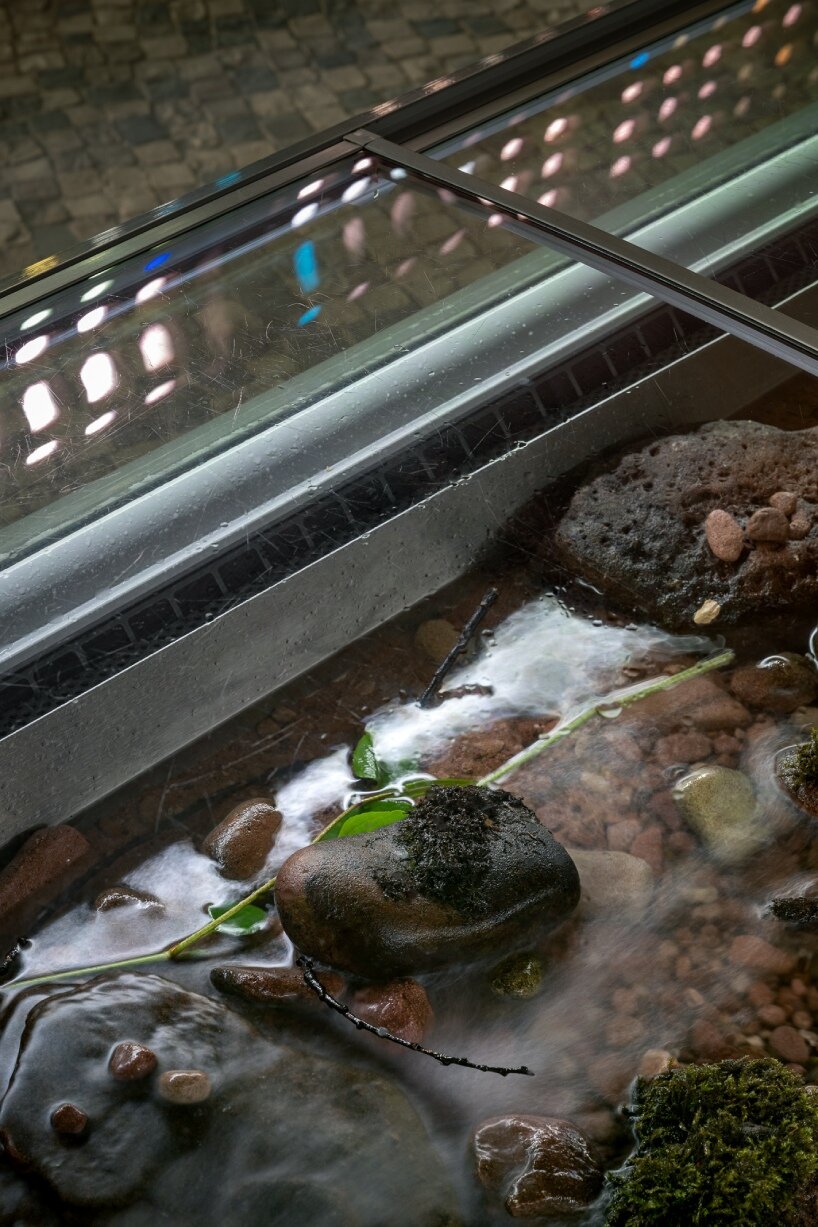
the team examined the watershed of the Black Forest | image © Sander van Wettum
DB: What’s next for this project, and for Atelier LUMA?
HW: By having done this project, I have a good sense of what it means to work in this region. With this connection it’s much easier now to do a broader mapping. This project is a prototype and it would be interesting to see how these cycles or processes can be implemented and may scale out. Therefore, collaboration is really important, because it’s not just about installing a new production system, but it should also involve local cultures and it should be prototyping with, not bypassing. Tradition is also important, as we worked with this brewery here about how tradition as practical skills can blend with new ingredients.
By making what may seem like a straightforward product — a drink — but doing so by interpreting the changing ecology and making fresh social and cultural connections, a work like Knötti can be both a commercial prototype and a probe into new social and ecological relations.
For Atelier LUMA I see opportunities in consulting for replication and testing of our material recipes in different bioregions around the world. Atelier LUMA also needs economic knowledge to help us plan and scale things out of the lab. The campus is such a great place to gather and to inspire international creators. As we need physical, sensorial, and intuitive knowledge exchange besides the more rational or online. To bring change it needs pioneers. People who embrace uncertainty and who can make a surprising picture of the future.
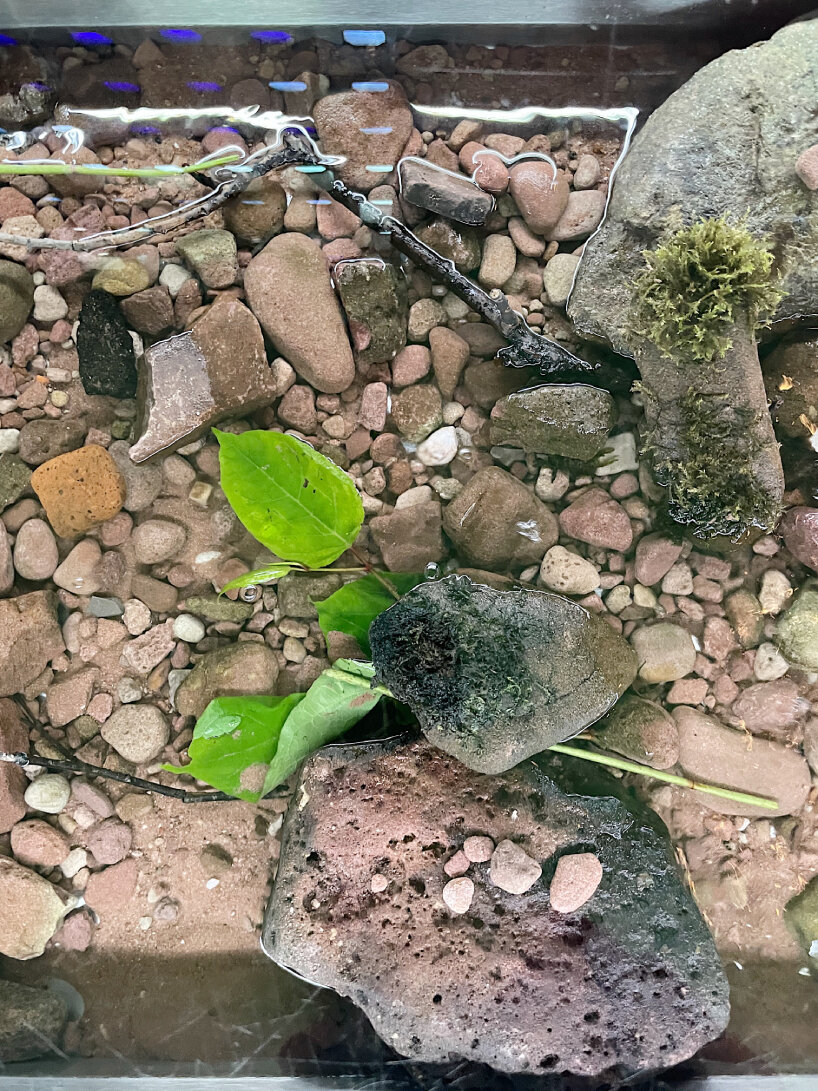
knotweed grows on and erodes the riverbanks and it disturbs native vegetation | image © designboom
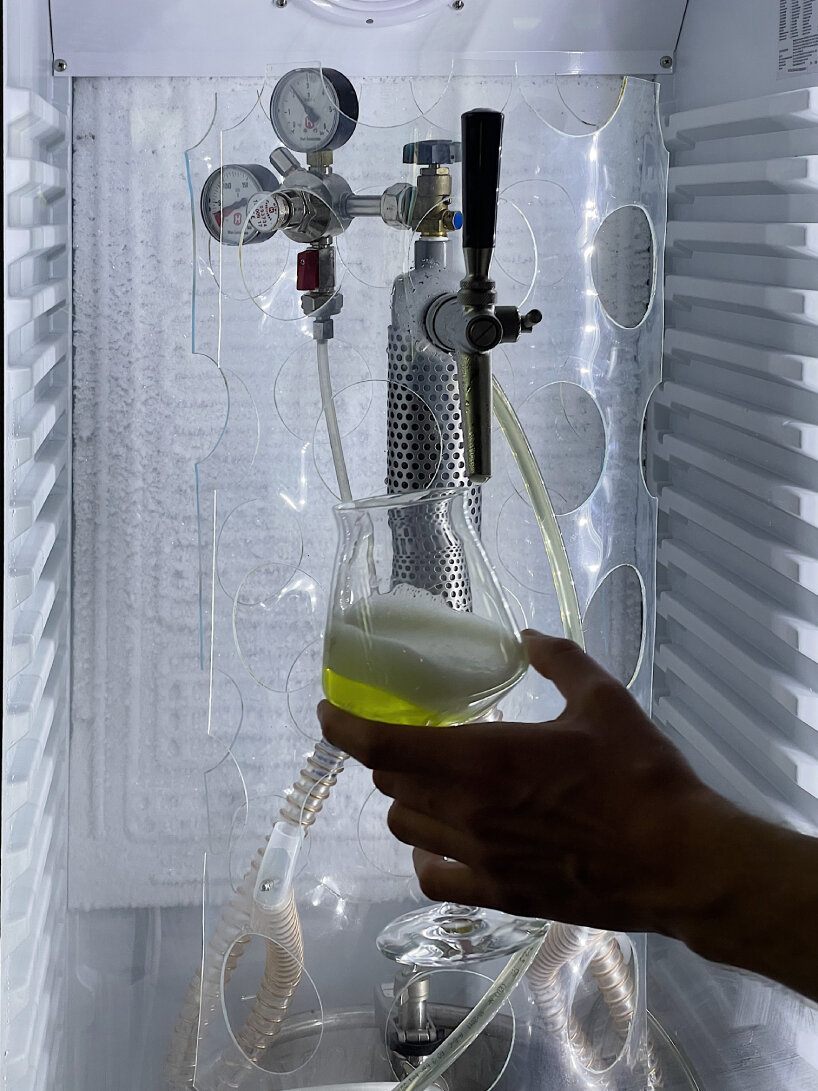
image © designboom
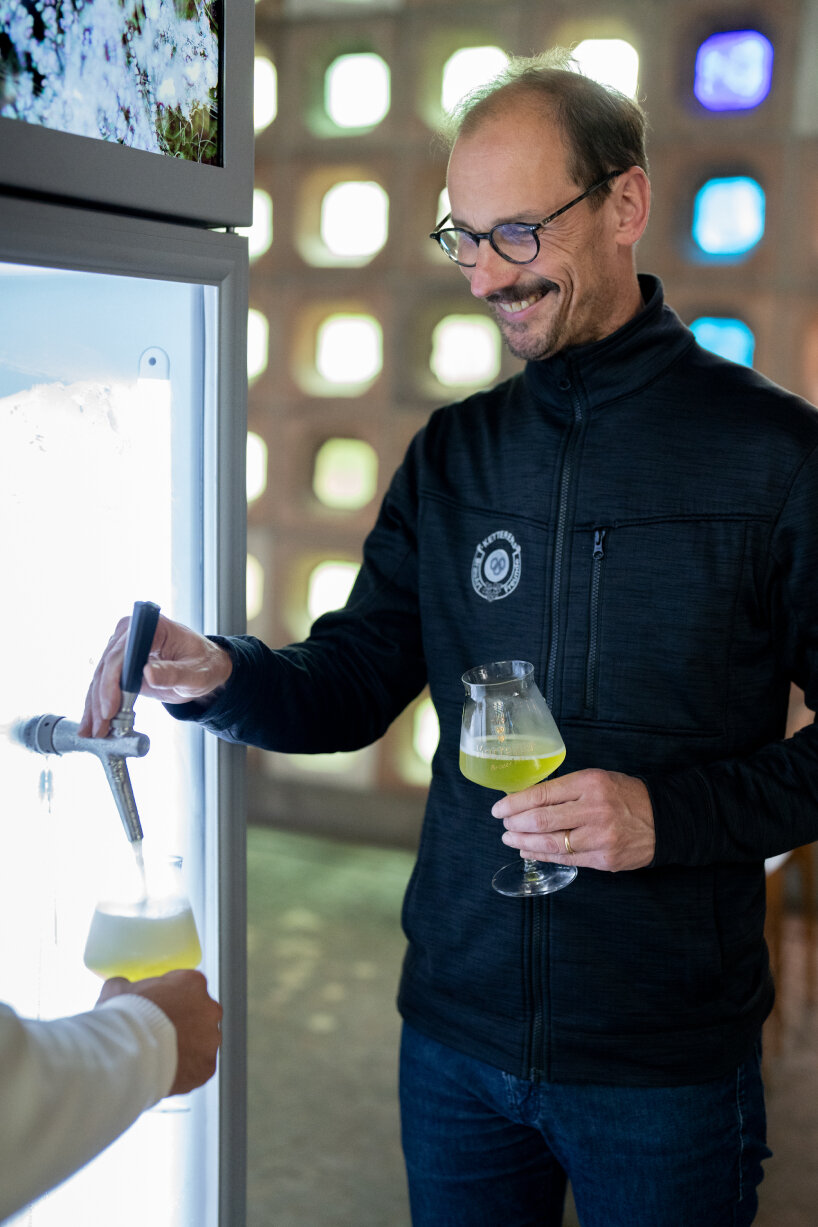
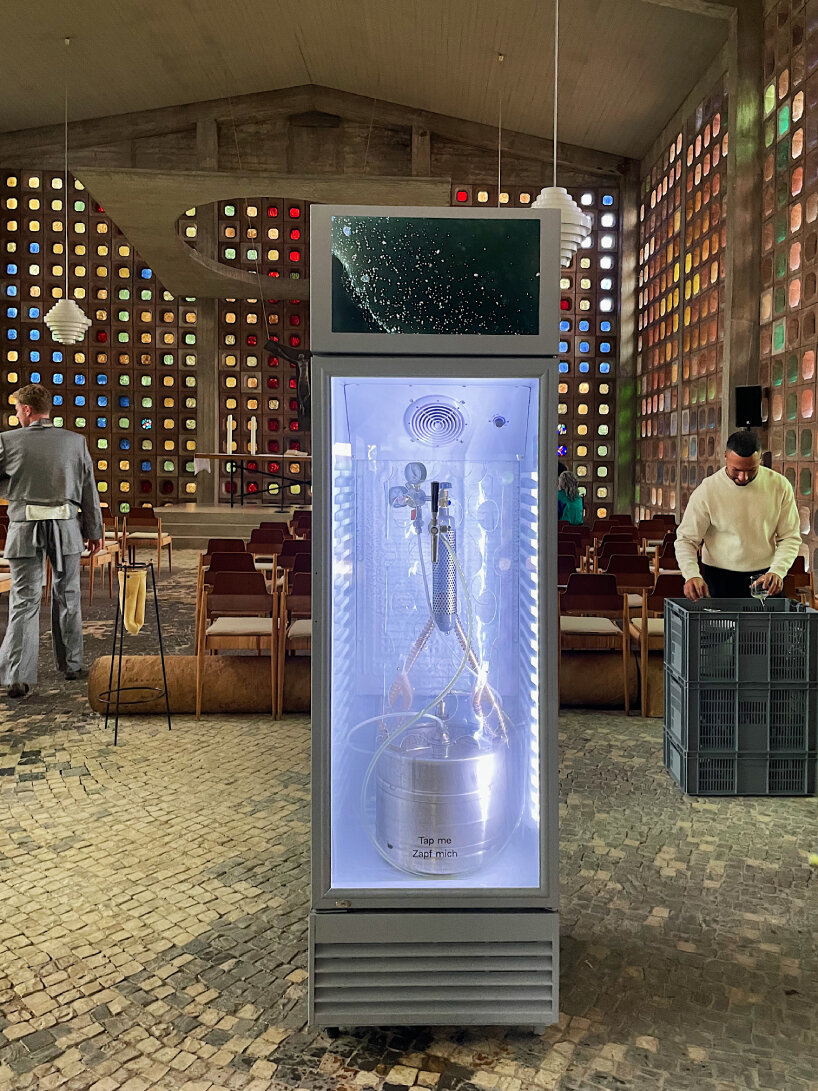
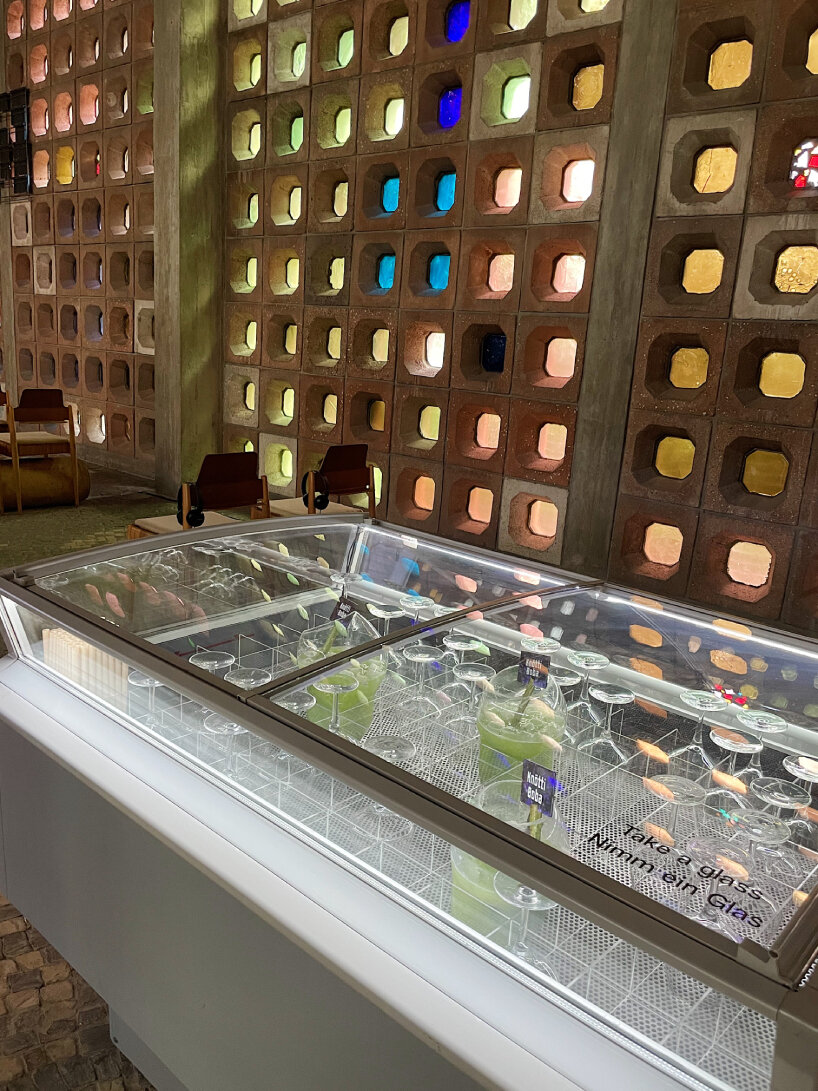
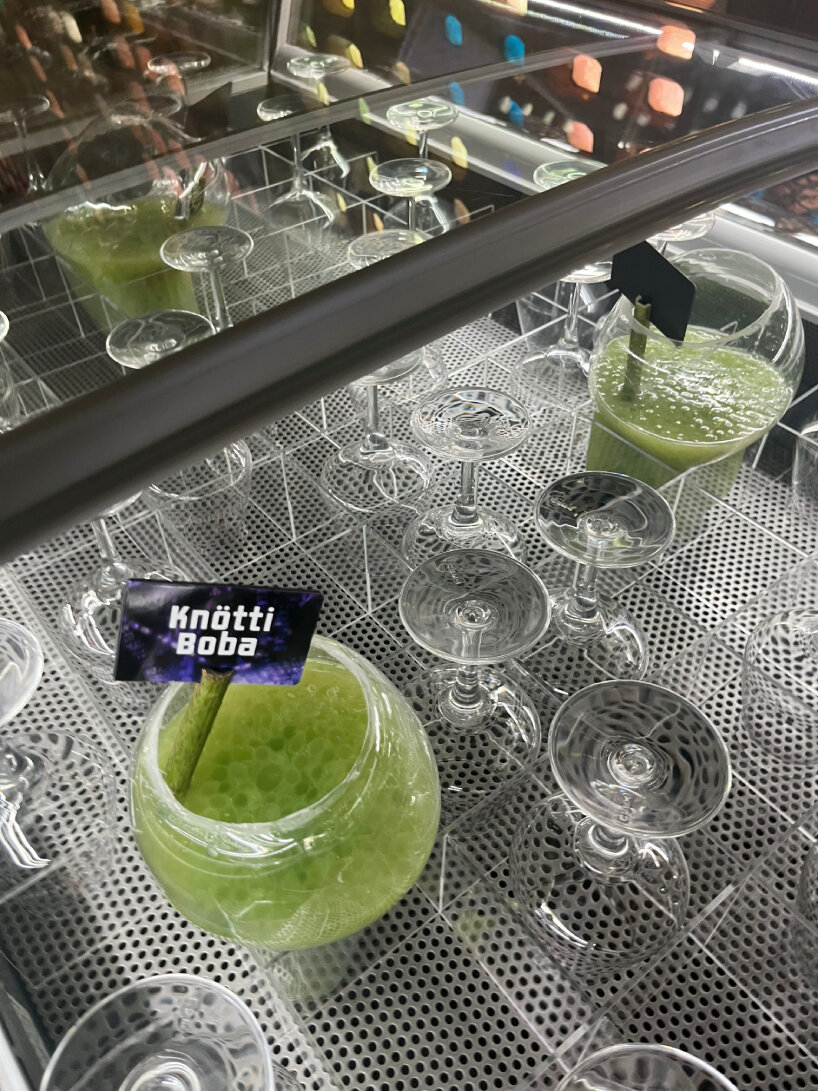
project info:
name: Water Hadde Dudde Da
program: Ornamenta | @ornamenta2024
dates: 5th July — 29th September, 2024
exhibition: Schmutzige Ecke
research director: Henriette Waal (of Atelier LUMA | @luma_arles)
research and design team: Moreno Schweikle, Anthea Oestreicher, Amalia Shem Tov, Jan Schulz
happening this week! holcim, global leader in innovative and sustainable building solutions, enables greener cities, smarter infrastructure and improving living standards around the world.
art interviews (158)
atelier LUMA (3)
interactive installation (300)
PRODUCT LIBRARY
a diverse digital database that acts as a valuable guide in gaining insight and information about a product directly from the manufacturer, and serves as a rich reference point in developing a project or scheme.
